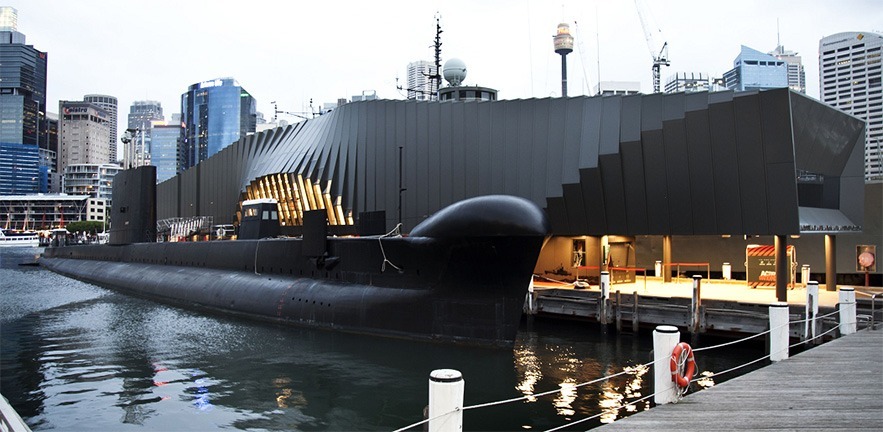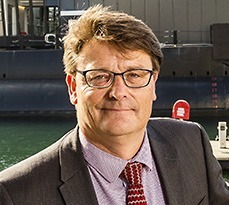Kevin Sumption, Director of the Australian National Maritime Museum, shares his thoughts about the cultural sector, main challenges and importance of life-long learning.

Kevin Sumption PSM, Director of the Australian National Maritime Museum and an alumnus of Cambridge Judge’s executive education programmes Service Innovation in a Digital World (2011) and the Advanced Leadership Programme (2013), has a wealth of experience in design and museum management. Last year Kevin was included in the Queen’s Birthday Honours list, and was awarded a Public Service Medal (PSM) for services to museums in the United Kingdom and Australia and also for the promotion of awareness and understanding of Australia’s indigenous maritime heritage.

But he doesn’t stop there and is always looking for new challenges and things to learn despite his busy work schedule. Kevin recently came back to Cambridge Judge for another Executive Education course – Strategic Branding in the Social Media Era. Here he shares some thoughts about museums and the challenges facing the cultural sector today.
What is special about the Australian National Maritime Museum?
As a national institution we have a particular focus on collecting and researching in three major areas: the history and future of the Royal Australian Navy; the history of immigration to Australia and the oldest living culture in the world, the 60,000 years of Indigenous Australia’s maritime heritage. The Museum is based in Sydney and has a collection of over 140,000 artefacts, including a fleet of historic vessels – including a Cold War-era, Australian-built destroyer and an Oberon Class submarine. Additionally, we home 11 historic, operational vessels such as a full-scale replica of James Cook’s HMB Endeavour – that we regularly sail around Australia and the world.
Why are museums still relevant today when people can ‘explore’ pretty much everything online?
I think people still need a physical place where they can spend time to learn about the incredible technological accomplishments of humankind. Even if we spend a lot of time online, especially younger generations, we still need social venues where we can learn and have fun. Therefore, museums need to listen to visitors, find out what their needs are and adapt. One of the major challenges for many museums is how to attract and engage with younger generations, particularly 18 to 25 year olds.
Our research has shown this generation has a strong affinity and interest in Ocean Conservation and the developing blue economy. We recently made the strategic decision to increasingly focus on research and collecting activities in these areas and are now working with Australian universities like University Technology Sydney and the University of Tasmania, as well as international institutions like the Woods Hole Oceanographic Institute.
Working in a museum is…
Challenging but at the same time rewarding. I travel a lot for my job to countries like Indonesia, the US, Turkey and the UK as I’m doing a lot of so-called “soft” or cultural diplomacy. This is because we are looking after shipwrecks on behalf of the Australian Government in international waters. But it’s not only this museum: I see a growing trend in cultural diplomacy where cultural institutions are involved, and I think it helps establish cultural and business connections between countries.
Why it’s important to listen to customers (visitors)
The Maritime museum has almost 3 million visitors annually – that includes website visitors, people visiting our travelling exhibitions around Australia, as well as local and international tourists visiting our main museum campus in Sydney. Visitors from China are one of our fastest growing markets followed by tourists from India, Indonesia, UK, New Zealand and the US. Making our museum a welcoming and effective learning environment for Chinese visitors has been one of my major priorities. Now all our new exhibitions, documentaries and guided tours are available in Mandarin and the museum employs 14 Mandarin-speaking guides.
What is the main challenge?
The main challenge for our museum is financial stability as we’re 40 per cent self-funded. To address that we need to diversify where the money comes from – foundation, philanthropy, exhibitions and commercial activities. As the museum is based close to water and is an attractive place to be, we also lease some offices. Another challenge is finding talent: we’re recruiting internationally, but are also looking to identify local people and develop Indigenous mentorship and education programmes.
Life-long learning
With a background in industrial innovation, I’m always looking to learn something new and to turn things around. I like coming back to Cambridge where I meet people from different sectors and can apply these case studies in my sector. For example, when I was looking to develop a strategy on how to attract international audiences, from China in particular, I searched online and was attracted to Cambridge Judge Professor Peter Williamson and his work in China. Now I’m back again to do a course in social media and branding, as we’re planning to launch a re-brand campaign in few months’ time.
Lessons for leadership. What makes a good leader?
We have a team of 150 part-time and full-time staff in the museum – working in education, curatorial, business development, library, security, etc. Additionally, around 600 volunteers are helping us mainly with visitors, including former navy staff who have served on some of our navy vessels – who tell unique stories to visitors.
From my experience there are two things that are important for leaders: clear vision and empowerment. If people know what an organisation’s mission is, it will make their jobs easier. Empowerment is also crucial: a leader can’t do everything, therefore he needs to have a strong team who can work in a dynamic and contemporary way.

